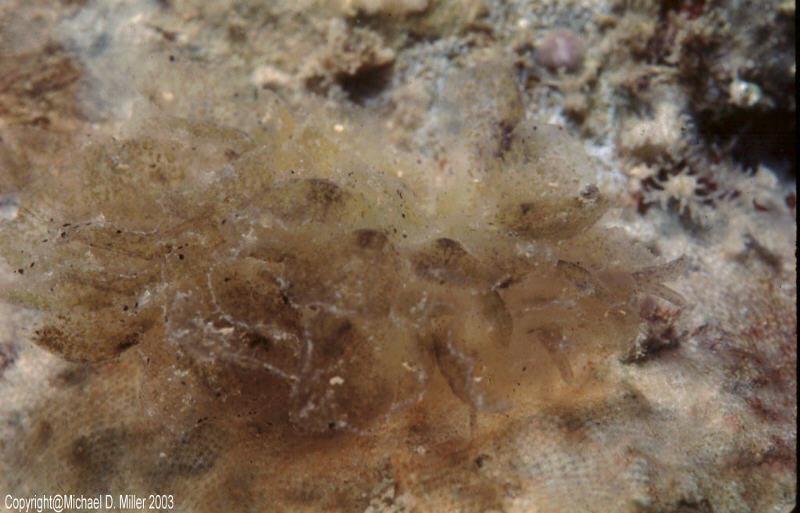 |
Polybranchia orientalis
Photo Courtesy of WebmasterBatangas, Philippines
Polybranchia orientalis, although quite common, is one of the most over looked species in the Indo-Pacific. The reason for its oversight is not that it is bashful or nocturnal or something like that, but that it is so incredibly cryptic.
Polybranchia orientalis is a relatively common member of the family Caliphyllidae. Previous names include Phyllobranchus and Phyllobranchillus. The closest species seen here on Mike's web site is Cyerce orteai .
In Polybranchia the notal surface of the animal is covered in leaf-like cerata, which contain fine branching digestive gland ducts. When disturbed this species is capable of casting off its cerata. This is a defensive strategy, called autotomy. Dropping the cerata is similar to a squid giving off ink to confuse a predator. New cerata grow back rapidly.
This species has another defensive shield. The cerata and glands along the edge of the cerata produce sticky secretions from the skin. These milky secretions are distasteful, and function to repulse predators.
The species is highly variable in color as seen by Mike's photo above of a transparent tan specimen and another red specimen observed in the same locality. In both photos you can see specks of material (food passing through the digestive system) indicating the finely branched network of digestive gland ducts in the cerata.
Polybranchia orientalis is a sacoglossid and therefore feeds on algae. The variation in color between individuals is likely related to the last algae it ate - the red species discussed earlier likely just fed on a red alga. Ono page 40, shows a greenish specimen, and Suzuki page 36, shows a yellow specimen. My guess is that the transparent individual above has not been fed in a while.
This species is known throughout the Indo-Pacific. Pretty neat, huh?
Danville, Calif
Feb . 2003
Taxonomic information courtesy of:

David W. Behrens
Author:
Pacific Coast Nudibranchs
Send Dave mail at info@seachallengers.com
|
